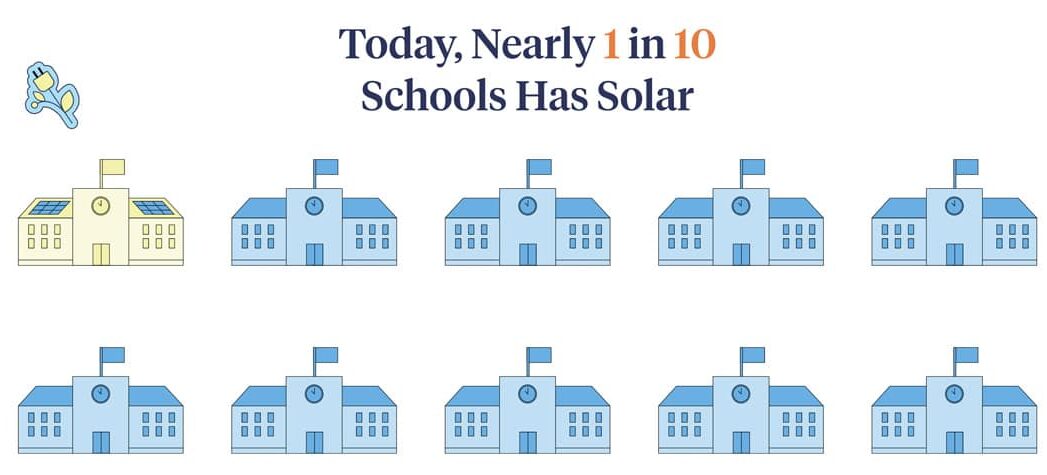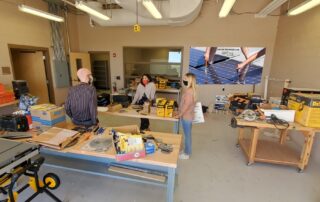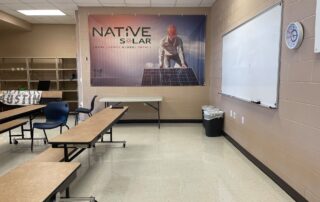
Schools Adopting Solar
Across the nation, schools from grades K-12 are quickly adopting solar energy as they target improved sustainability and reduced energy costs.
According to a recent report by Generation180, since 2015, the number of schools using solar has tripled, and now almost 1 in 10 schools has some form of PV system on their campus.
Reducing Energy Costs
Going solar helps significantly reduce costs for schools, as energy is second only to teacher salaries when it comes to costs, according to NREL. Nationally, K-12 schools spend more than $6 billion a year on energy, at least a quarter of which could be saved through smarter energy management.
As schools look for ways to cut spending , the option of going solar presents a unique opportunity for schools to alleviate budget pressure, often at little or no upfront cost. This frees up funds for schools to reinvest in student learning and other educational benefits to promote alternative energy and power generation careers.
However, while the nation as a whole is beginning to switch their schools to solar power, Texas is surprisingly not one of the states at the forefront of the transition. Instead, states such as California, New Jersey, Arizona, Massachusetts, and Illinois are leading the way.
A Practical Learning Experience
In addition to being a clean source of energy for schools, solar panels provide students an opportunity to have first hand experience with renewable energy careers and technology pathways. Wendy Pilleo, the executive director of Generation180, stated that K-12 schools can become incubators “for our future clean energy workforce by teaching about renewable energy, engaging in hands-on STEM research, and training students for solar careers.” Students can access realtime data about how much solar power is generated attheir school, and then use these learnings in the classroom to connect lessons to engineering and science career opportunities.
A Safe and Healthy Place for Communities
As an integral part of local communities, schools provide substantial benefits through economic and community development. Switching to solar as an alternative energy source is another way that schools can offer benefits beyond the classroom.
Installing solar panels is an obvious choice for health and air quality. As a cleaner source of power, solar can drastically cut a school’s carbon footprint and improve air quality in the community. By adding batteries to their solar systems, schools can go a step further to become emergency shelters, or “resilience hubs”. Particularly in communities prone to severe weather, schools can use their PV system and batteries (including Electric Vehicles) to generate enough power to keep electricity flowing even when a natural disaster interrupts the grid, providing its local community with reliable electricity when most needed.
Funding
Installation costs for solar have decreased over 60% in the past decade, making financing options for schools more flexible and minimizing upfront costs as well as the costs of ongoing maintenance. The primary way in which schools have funded solar installations is through Power Purchase Agreements (PPAs). In a PPA, a third-party finances, builds, owns, and maintains the system. Schools then pay a lower rate for the electricity produced by its solar array, and are able to see immediate energy savings that increase over time. This is particularly true as we continue to see utilities raise prices for consumers.
Another common way that schools finance solar is through direct ownership. Schools can apply for grants, accept donations, and use bonds or cash to pay for projects through direct ownership. This strategy does not minimize upfront costs as much as PPAs, but schools can use the energy they produce for free instead of paying a third-party for it.
Recently, however, the government has made it easier for schools and other non-profit entities to embrace clean energy, particularly solar. In passing the Inflation Reduction Act (IRA), Congress stipulated that the 30% federal solar tax credit (ITC) would now also be extended to include tax-exempt organizations such as schools and churches. Thus, 30% of the cost of any solar installation at a school will be paid for by the federal government, making direct ownership of solar more accessible to schools across the country.
NATiVE’s Role
NATiVE Solar is proud to work alongside schools to bring clean energy and solar education to its students beginning with Del Valle and currently with Bryan ISD.
Over our fifteen years in business, NATiVE has installed many solar PV systems for Texas schools. One of these schools was Cedars International Academy, where NATiVE installed a 105.6 kilowatt array in 2014.
We look forward to seeing more schools adopt solar and create educational opportunities for the youth to learn about the future of clean energy.


















































Leave A Comment